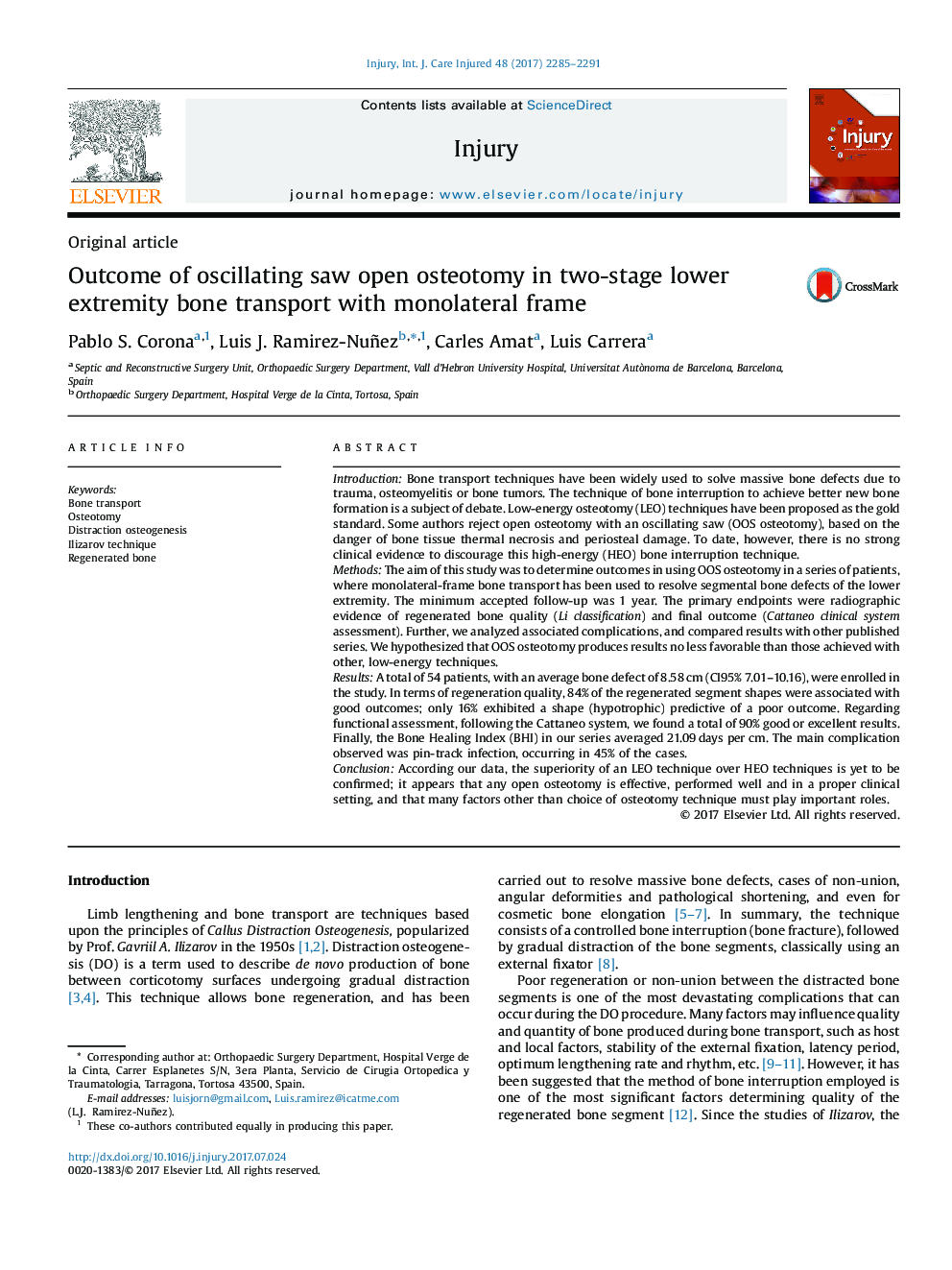| Article ID | Journal | Published Year | Pages | File Type |
|---|---|---|---|---|
| 5652450 | Injury | 2017 | 7 Pages |
IntroductionBone transport techniques have been widely used to solve massive bone defects due to trauma, osteomyelitis or bone tumors. The technique of bone interruption to achieve better new bone formation is a subject of debate. Low-energy osteotomy (LEO) techniques have been proposed as the gold standard. Some authors reject open osteotomy with an oscillating saw (OOS osteotomy), based on the danger of bone tissue thermal necrosis and periosteal damage. To date, however, there is no strong clinical evidence to discourage this high-energy (HEO) bone interruption technique.MethodsThe aim of this study was to determine outcomes in using OOS osteotomy in a series of patients, where monolateral-frame bone transport has been used to resolve segmental bone defects of the lower extremity. The minimum accepted follow-up was 1 year. The primary endpoints were radiographic evidence of regenerated bone quality (Li classification) and final outcome (Cattaneo clinical system assessment). Further, we analyzed associated complications, and compared results with other published series. We hypothesized that OOS osteotomy produces results no less favorable than those achieved with other, low-energy techniques.ResultsA total of 54 patients, with an average bone defect of 8.58Â cm (CI95% 7.01-10.16), were enrolled in the study. In terms of regeneration quality, 84% of the regenerated segment shapes were associated with good outcomes; only 16% exhibited a shape (hypotrophic) predictive of a poor outcome. Regarding functional assessment, following the Cattaneo system, we found a total of 90% good or excellent results. Finally, the Bone Healing Index (BHI) in our series averaged 21.09âdays per cm. The main complication observed was pin-track infection, occurring in 45% of the cases.ConclusionAccording our data, the superiority of an LEO technique over HEO techniques is yet to be confirmed; it appears that any open osteotomy is effective, performed well and in a proper clinical setting, and that many factors other than choice of osteotomy technique must play important roles.
